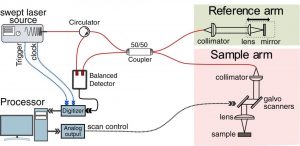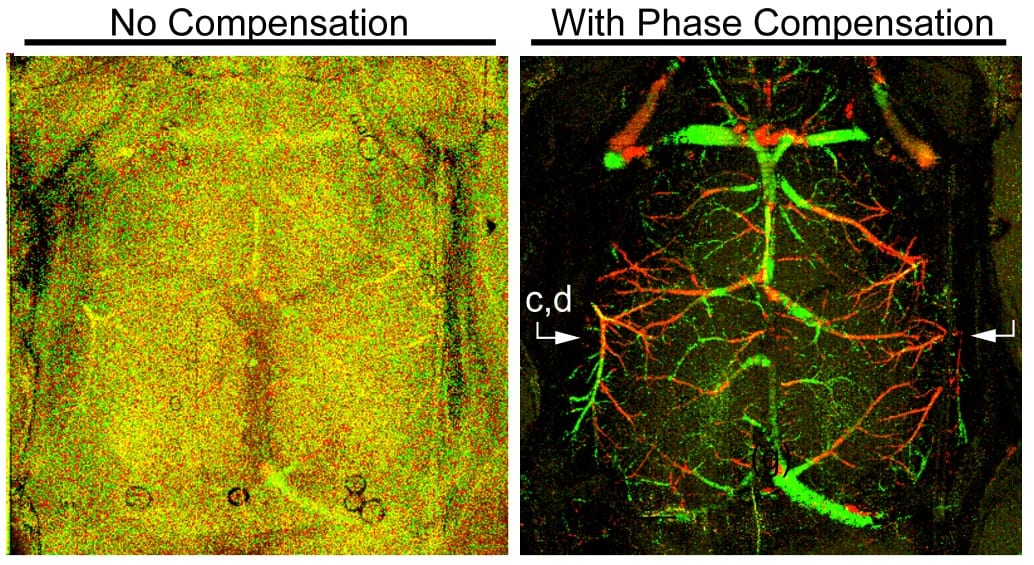Optical coherence tomography (OCT) is a non-invasive, depth-resolved optical medical imaging technique with high sensitivity and micron-scale resolution. Its balance between spatial resolution and penetration depth fills the gap nicely that exists between confocal microscopy and medical ultrasound sonography, and is widely accepted for the structural and functional imaging of various types of biological tissues. During the past decade, the applications of frequency-domain ranging techniques/Fourier-domain OCT (FD-OCT) has made significant improvements in terms of the system sensitivity and imaging speed.
There are two implementations of FD-OCT by far: 1) a broadband light source with a spectrometer detection is used to spatially resolve the spectral interferograms, termed as Spectral Domain OCT (SD-OCT), and 2) a tunable wavelength-swept light source with a single photodetector is used to acquire the same spectral interference signal in the time domain, which is termed as swept-source OCT (SS-OCT) or optical frequency domain imaging.
While SD-OCT is inherently phase stable since all the spectral sampling points are obtained simultaneously by a line-scan camera, it is generally difficult for SS-OCT to achieve phase-sensitive detection. A number of phase-stabilization techniques have been reported in the literature in order to enable SS-OCT for functional imaging where phase-sensitive detection is needed. While these techniques demonstrated excellent phase stability and competitive depth ranging distance, they all require additional hardware to implement, making the system more complex, which is often not desirable for real time in vivo applications, particularly when the purpose of the system development is for clinical translation.

Schematic of the SS-OCT system based on VCSEL swept source.
A team of scientists from the Department of Bioengineering from the University of Washington (USA) developed a novel fully numerical technique with significant improvement in the phase stability of a micro-electromechanical (MEMS) vertical cavity surface-emitting laser (VCSEL) based swept-source optical coherence tomography (SS-OCT) system. The big advantage of this new technique is that it features excellent tolerance to acquisition jitter without any requirement of hardware modifications and without a significant increase of computing budget.
“The comparison of image quality [in the study] indicate that the proposed phase stabilization technique is robust, and effective in improving the image contrast-to-noise ratio and extending OCTA depth range” according to team member Professor R.K. Wang.
Read more about this new technique and other recent developments in the latest special issue on Optical Coherence Tomography of Journal of Biophotonics.

















